Related Topics
[VPN] How to set up a VPN server on ASUS router – IPSec VPN
What is a VPN?
Virtual Private Network : Virtual private networks encrypt your network connection, ensuring the secure transmission of important information and preventing your information from being stolen. Allows remote consumers (VPN clients) to securely connect to VPN servers.
VPN has a variety of connection methods, this article with Asus router support IPSec VPN servers to do the setup related to the introduction, and other supported servers(PPTP VPN, OpenVPN, WireGuard) settings can refer to the following related FAQ.
- For PPTP VPN server settings, please refer to: How to set up a VPN server on ASUS router – PPTP
- For OpenVPN server settings, please refer to: How to set up a VPN server on ASUS router – OpenVPN
- For WireGuard VPN server settings, please refer to: How to set up WireGuard® VPN server
For more information about VPNs, please refer to [Wireless Router] How to set up VPN server/VPN client on ASUS router and connect using different devices
Prepare
1) The VPN servers supported by ASUS routers vary by model, and it is recommended that you refer to ASUS product specifications to confirm that your router is supported.
2) To use VPN Server on your ASUS router, your router needs to have a public IP(WAN IP) from your ISP's internet service. This will allow devices on the internet to locate your ASUS router via a public IP(WAN IP).
If you are not sure of your public IP type, please check your Internet Service Provider (ISP).
3) Please update your router firmware to the latest version. For instruction about how to update the firmware, please refer the following FAQ
[Wireless Router] How to update the firmware of your router to the latest version
4) If you don’t know how to enter ASUS Router App, please refer to the following FAQ:
[Wireless Router] How to set up ASUS Wi-Fi router via ASUS Router App? (QIS, Quick Internet Setup)
[Wireless Router]How to manage multiple ASUS routers by ASUS router app?
Introduction
1. Use the ASUS Router App to set up an IPSec VPN server
2. Some functions of VPN will be different due to firmware version.
Support routers with firmware later than 3.0.0.4.388.xxxx (including), please refer to here for the setting instructions.
Support routers with firmware earlier than 3.0.0.4.388.xxxx, please refer to here for the setting instructions.
3. How to set up IPSec VPN client
4. FAQ
1. Enter ASUS Router App and click [Settings] > [VPN] > [VPN Server] > enable [IPSec VPN] (default is off)
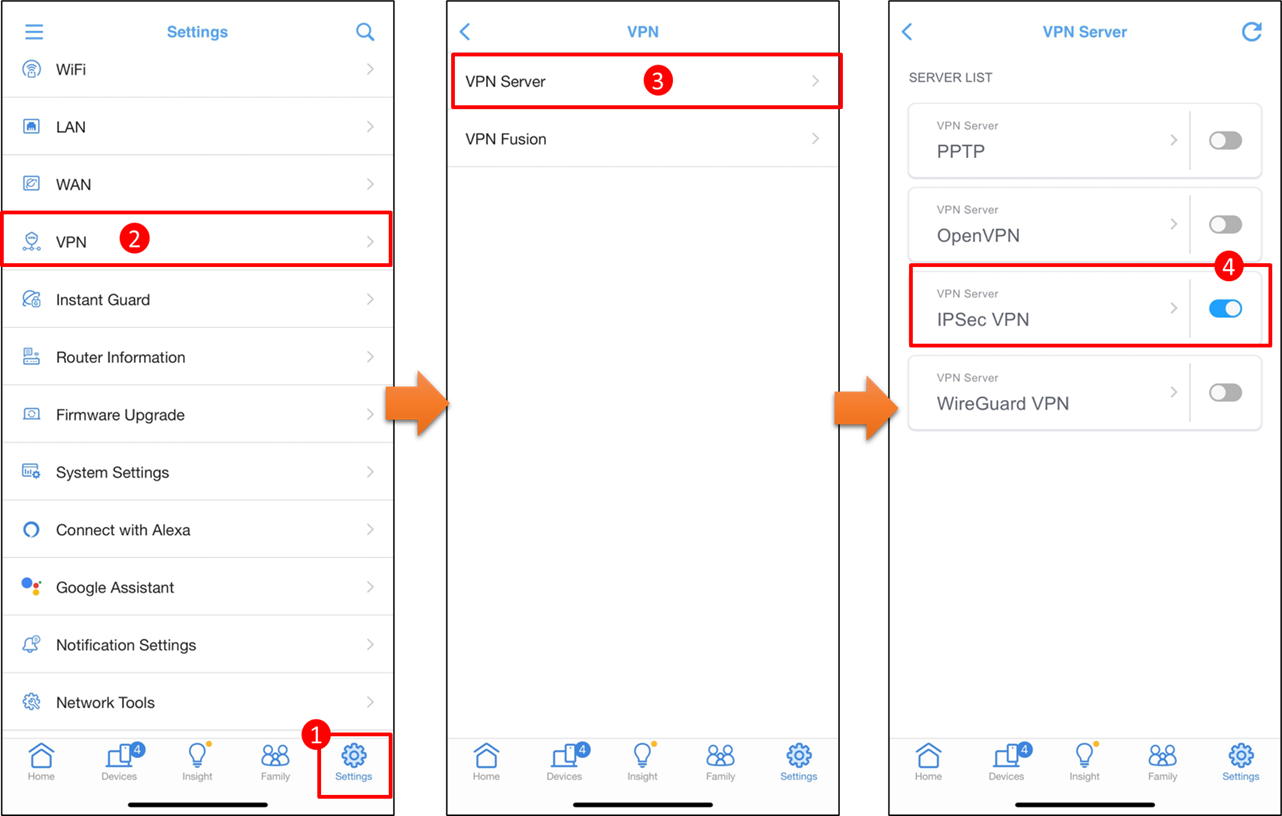
2. Enter customized [Pre-Shared Key], and this key is used to provide connection for IPSec VPN client. In the bottom, click『+』next to [VPN Client (Max Limit: 8) to add a new account.
3. Enter customized [Username], [Password], and then click [OK]. Reminder: Once the [Username] and [Password] are set, they cannot be modified.
4. The VPN client will display the number of newly added account and usernames. Last, click [Apply all settings] to finish settings.
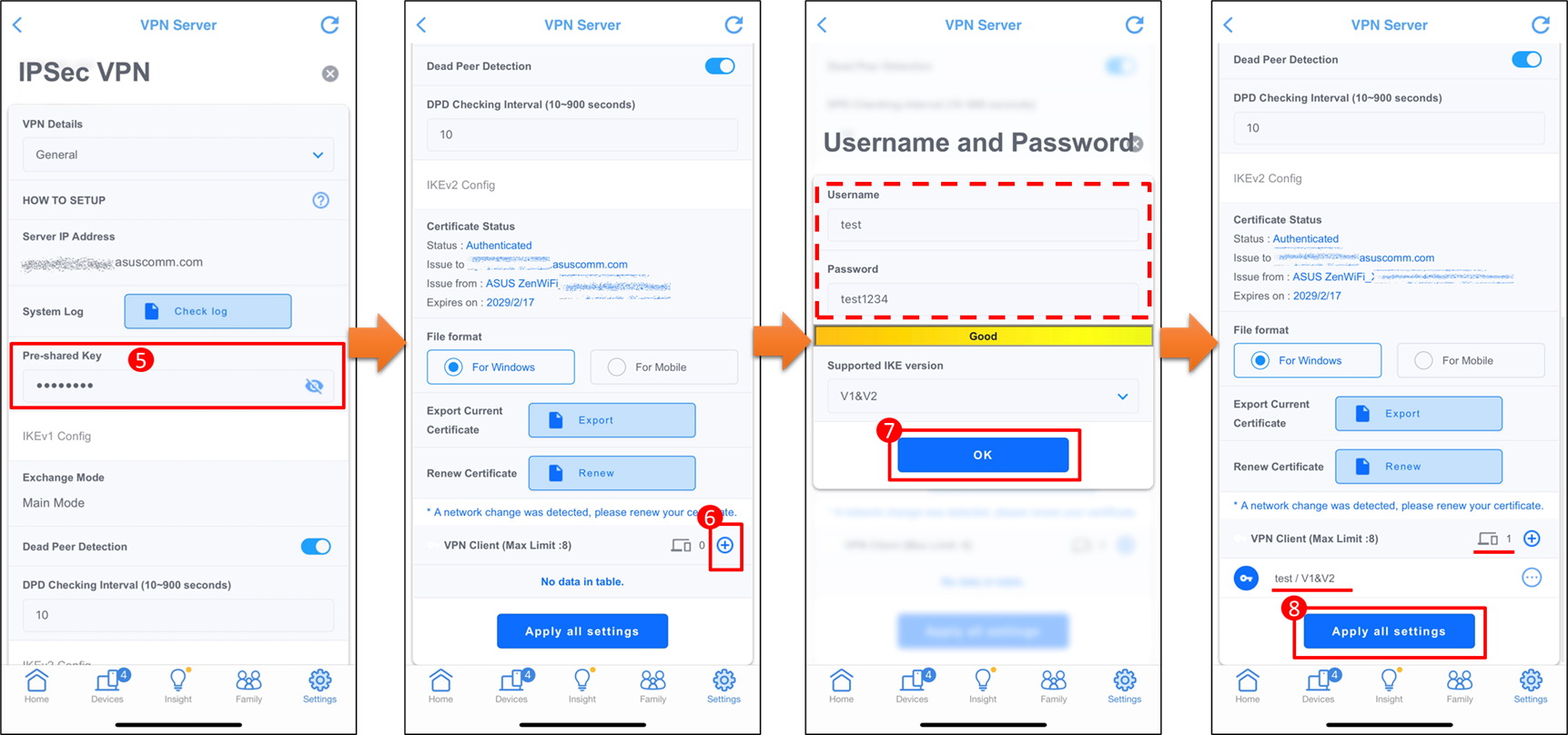
1. Connect your device (laptop or phone) to the router via wired or Wi-Fi connection and enter your router LAN IP or router URL http://www.asusrouter.com to the WEB GUI.

Note: Please refer to [Wireless Router] How to enter the router's GUI to learn more.
2. Key in your router's username and password to log in.
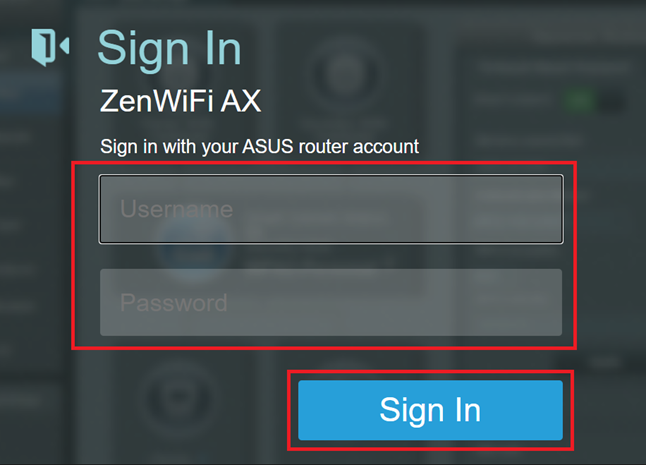
Note: If you forget the username and/or password, please restore the router to the factory default status and setup.
Please refer to [Wireless Router] How to reset the router to factory default setting for how to restore the router to default status.
3. Click [VPN] > [VPN Server] > click IPSec VPN button  to enable it (default is off) > enter customized [Pre-Shared Key]. This key is used to provide connection for IPSec VPN client.
to enable it (default is off) > enter customized [Pre-Shared Key]. This key is used to provide connection for IPSec VPN client.
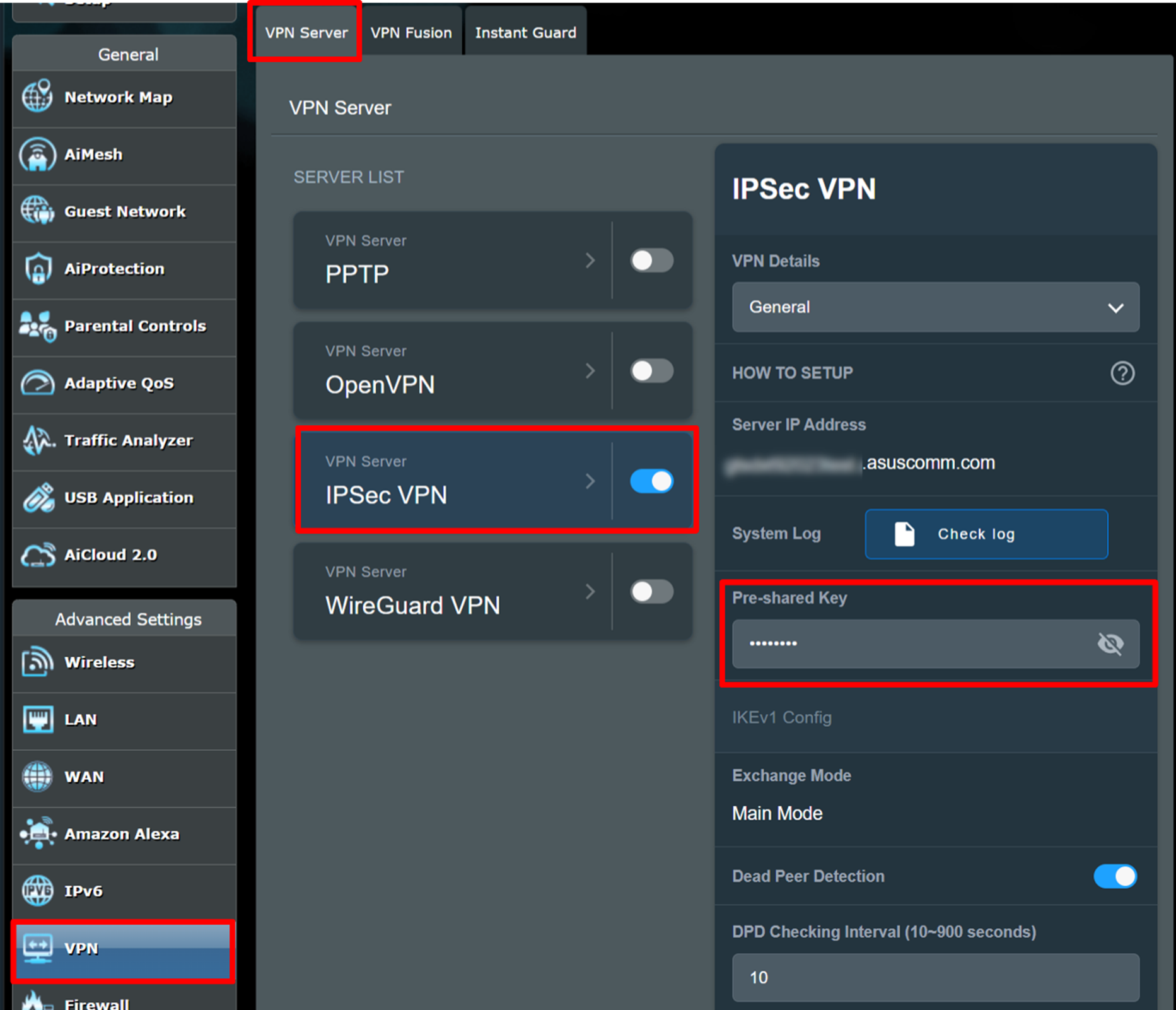
4. In the lower right corner, click『+』next to VPN Client (Max Limit: 8) to add a new account.
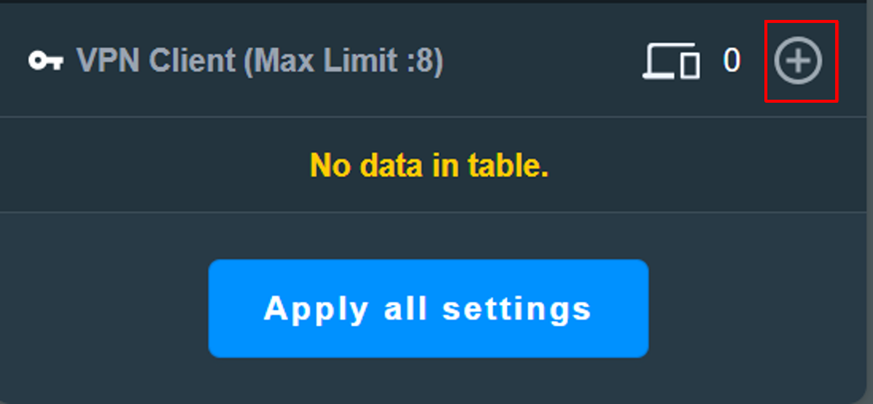
5. Enter customized [Username], [Password], and then click [OK].
Reminder: Once the [Username] and [Password] are set, they cannot be modified.
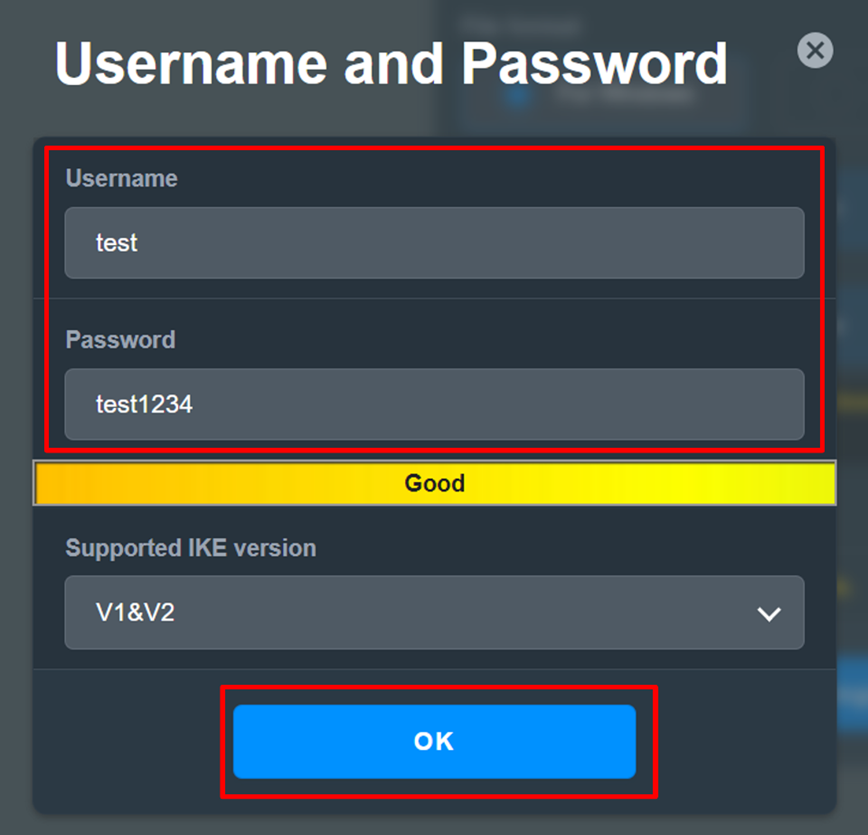
6. In the lower right corner, the VPN client will display the number of newly added accounts, as shown in the figure below.
Last, click [Apply all settings] to finish settings.
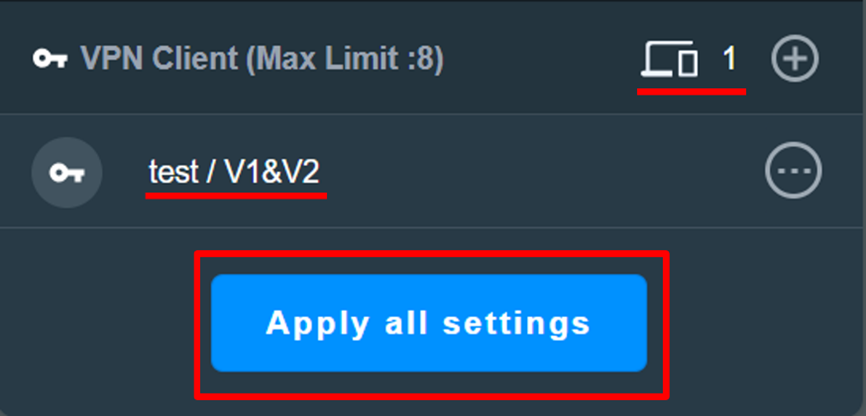
1. Connect your device (laptop or phone) to the router via wired or Wi-Fi connection and enter your router LAN IP or router URL http://www.asusrouter.com to the WEB GUI.

Note: Please refer to [Wireless Router] How to enter the router's GUI to learn more.
2. Key in your router's username and password to log in.

Note: If you forget the username and/or password, please restore the router to the factory default status and setup.
Please refer to [Wireless Router] How to reset the router to factory default setting for how to restore the router to default status.
3. Go to [VPN] > [VPN server] tab, set Enable IPSec VPN Server as [ON]
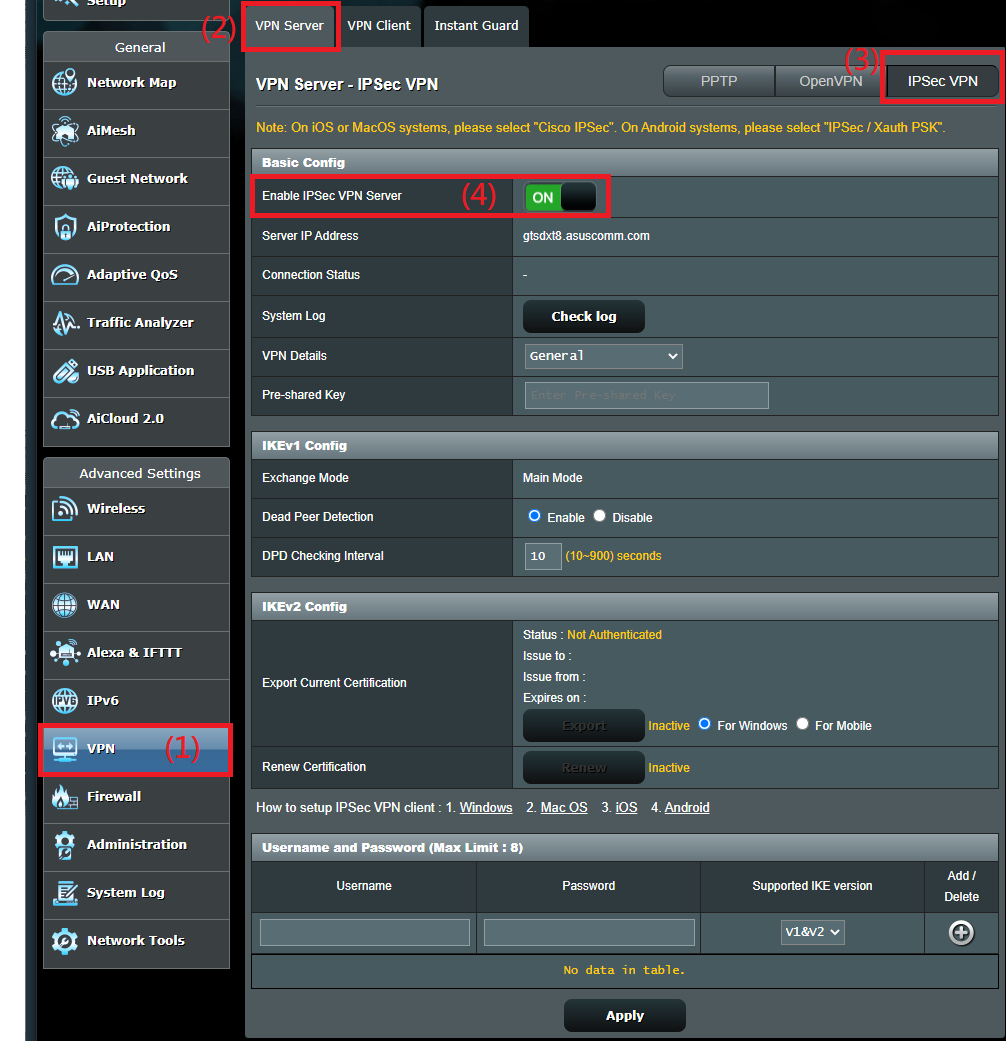
4. We suggest use default [General] settings and enter [Pre-shared Key] which can be more than 8 characters containing numbers and letters.
This key is used to provide connection for IPSec VPN client to enhance security.
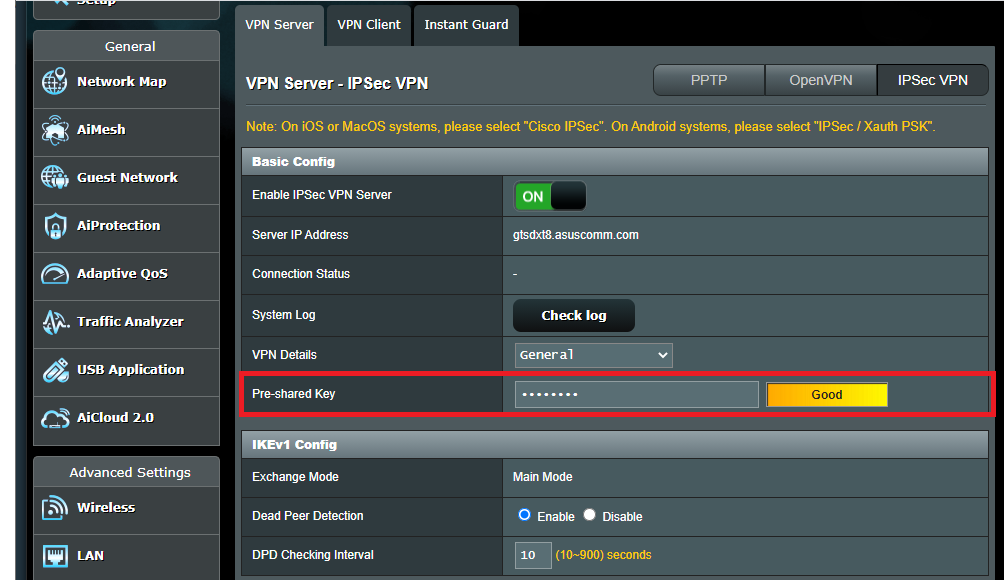
5. Enter [Username] and [Password] under [Username and Password]. You can set up 8 different usernames and passwords for your IPSec VPN clients.
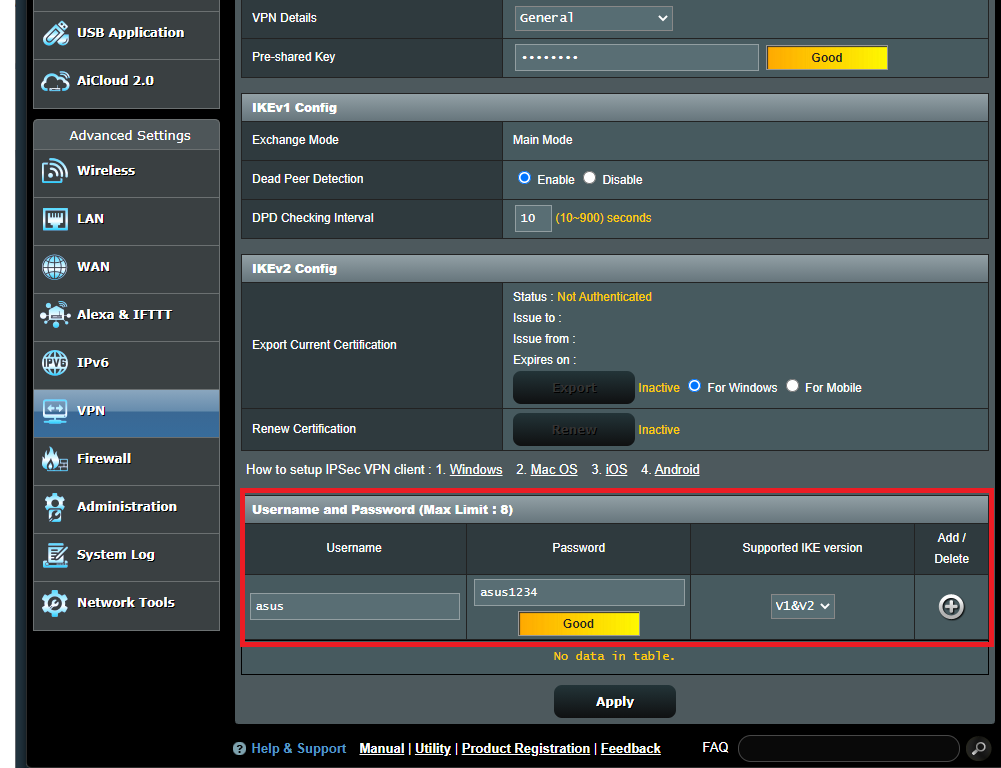
Note: Each account is only allowed for one VPN client connection. The latest connected client takes precedence, and the previously connected client will be disconnected.
6. After entering the username and password, please click  to add the account. As the figure showed below, the password you just set up is automatically hidden.
to add the account. As the figure showed below, the password you just set up is automatically hidden.
Next, click [Apply] to finish setting up IPSec VPN server.

Note: If your VPN client is using iOS or MacOS systems, please select [Cisco IPSec] on your devices (such as iPhone or MacBook). If your VPN client is using Android, please select [PSec / Xauth PSK] on your devices (such as mobile phone or tablet).

1. What should I do if VPN connection cannot be successfully established after setting up IPSec VPN server?
(1) If you need to connect to IPSec VPN server from Internet (e.g. using mobile phone from company to connect to IPSec VPN server on ASUS router at home), please check if your router gets Public IP. If you are not sure if your IP is public, please check with Internet Service Provider (ISP).
(2) Please check if pre-shared key, username, and password are entered correctly on your IPSec VPN client.
(3) Please check if your router is updated to the latest firmware version.
Please refer to [Wireless Router] How to update the firmware of your router to the latest version to learn more.
2. After setting up IPSec VPN server, how many VPN clients can connect to it at the same time?
In VPN Server – IPSec VPN page, you can set up 8 different usernames and passwords for your IPSec VPN clients.
Each account is only allowed for one VPN client connection (when a new VPN client is connected, the previously connected client will be disconnected).
For example, you originally use your mobile phone to connect to IPSec VPN server by username [test] and password [1234].
When another computer is using the same username and password to build VPN connection, VPN connection on your mobile phone will be disconnected.
3. After a few seconds or minutes of inactivity, VPN connection on devices (Windows/iOS/Android) are disconnected.
When your device is idle or inactive, VPN connection may disconnect due to inactivity on the device.
Currently, this setting cannot be adjusted on router. Please set it up on your devices.
How to get the (Utility / Firmware)?
You can download the latest drivers, software, firmware and user manuals in the ASUS Download Center.
If you need more information about the ASUS Download Center, please refer to this link.